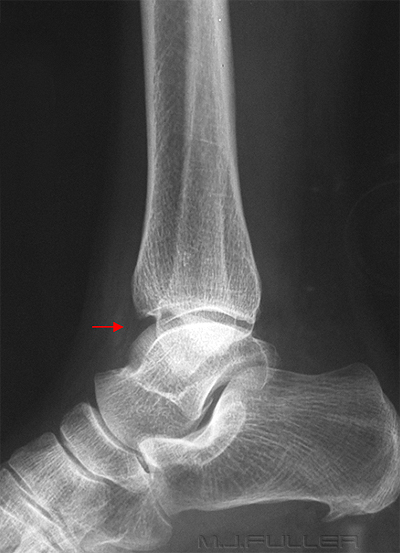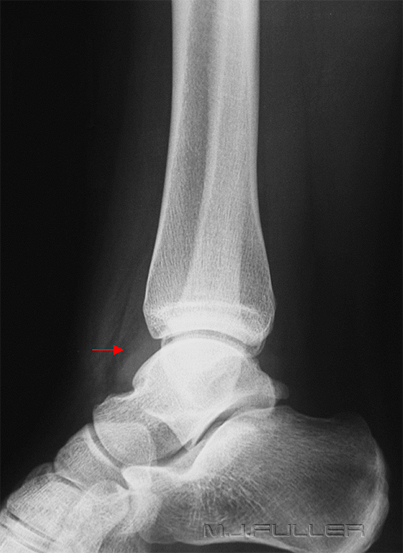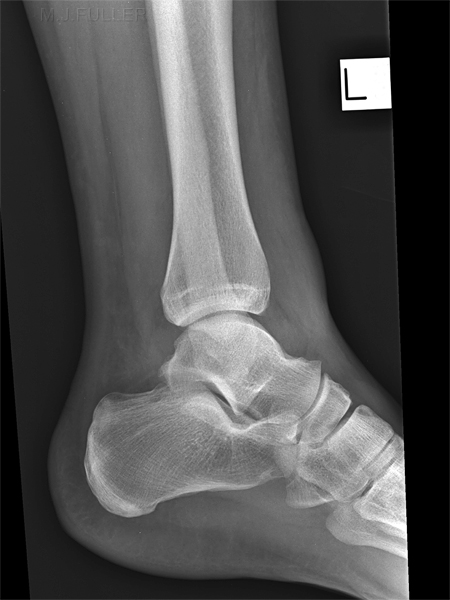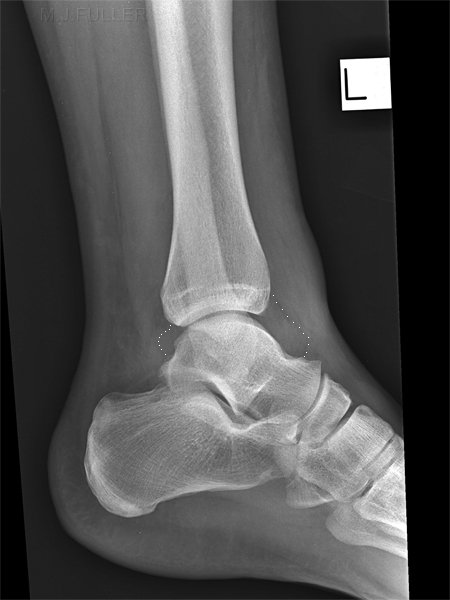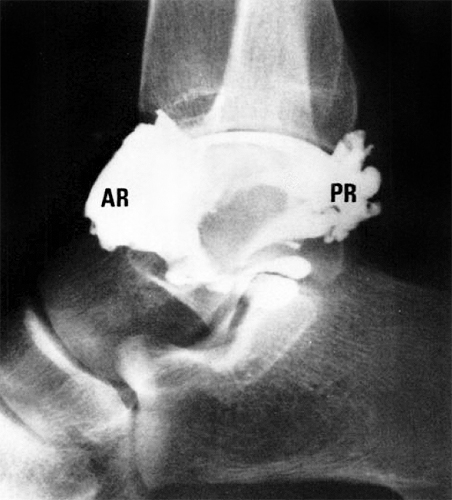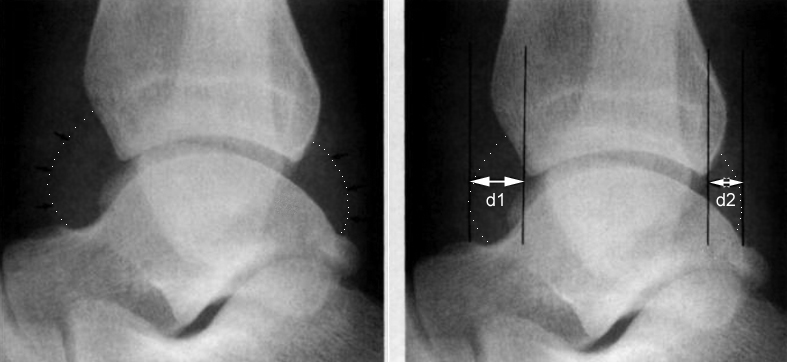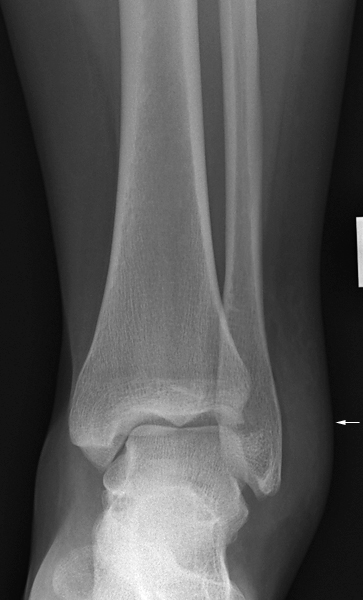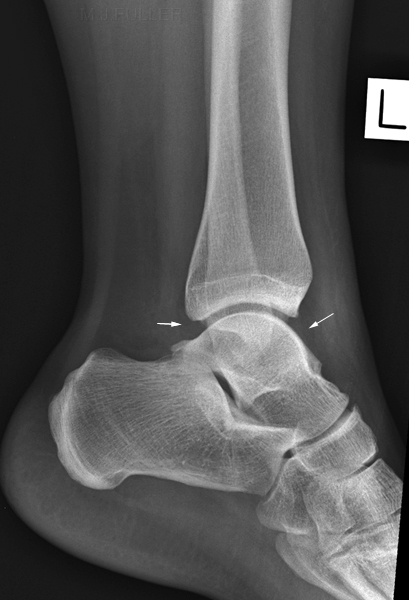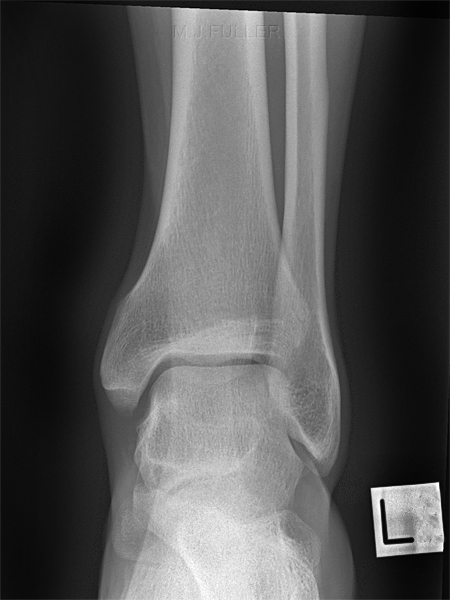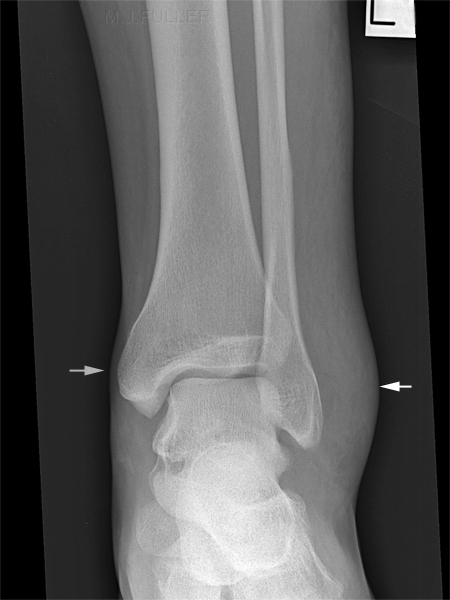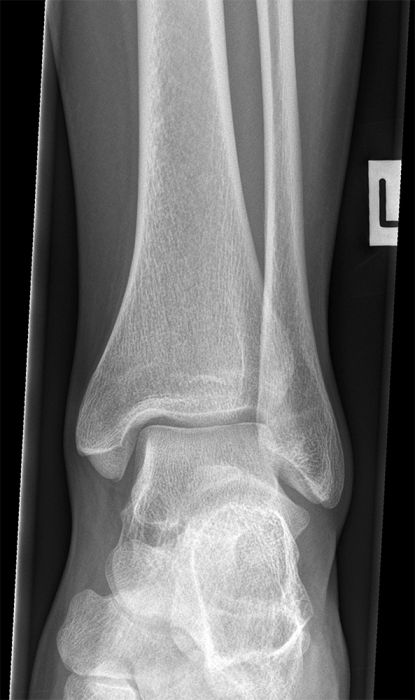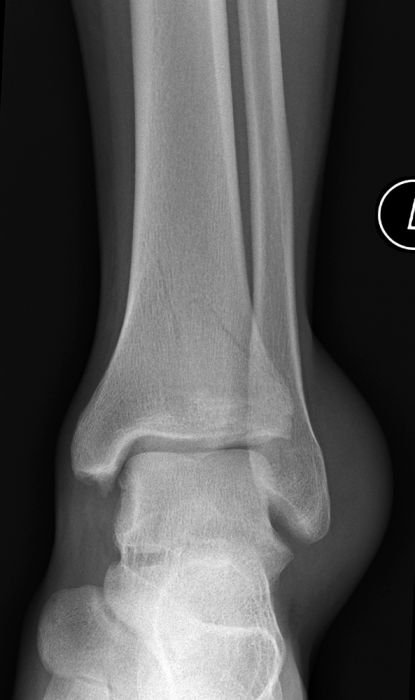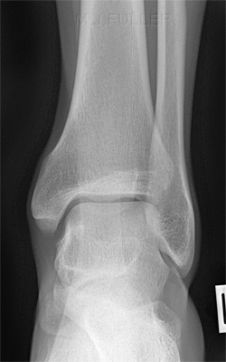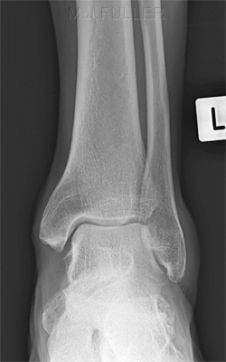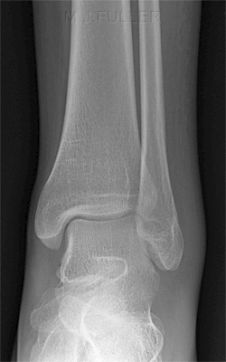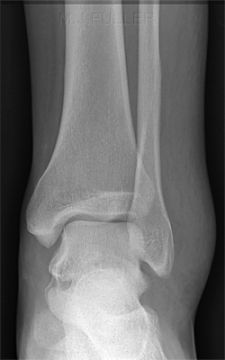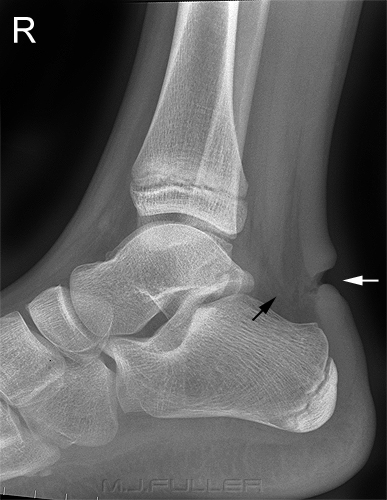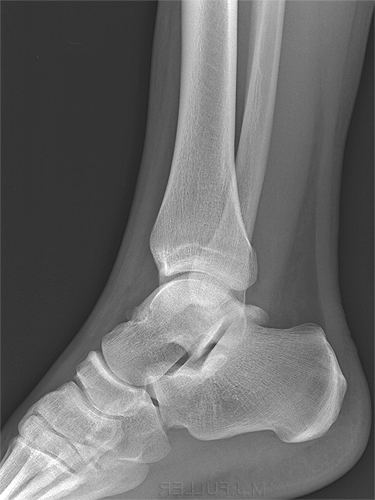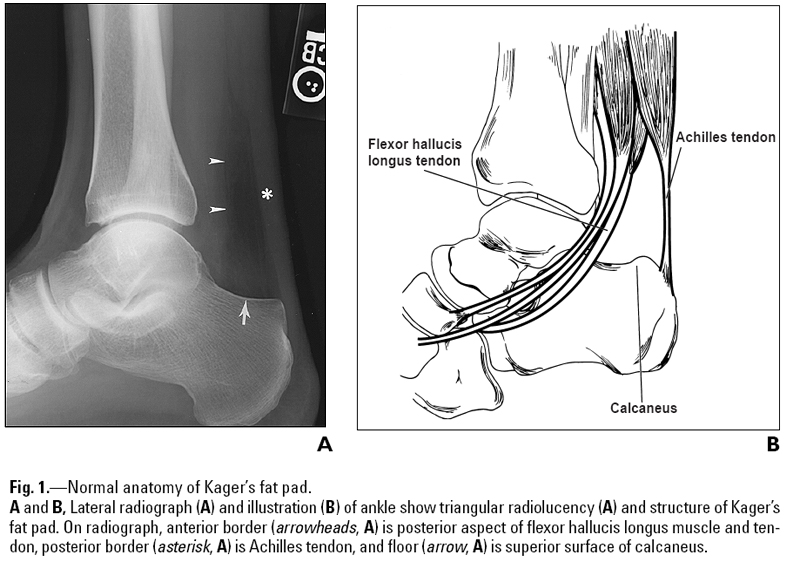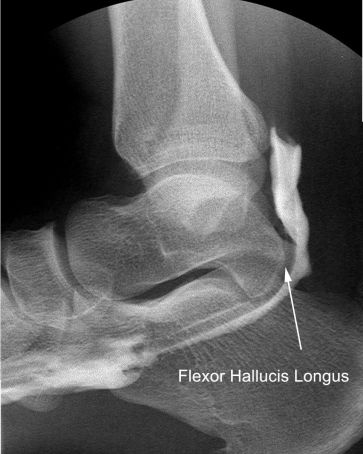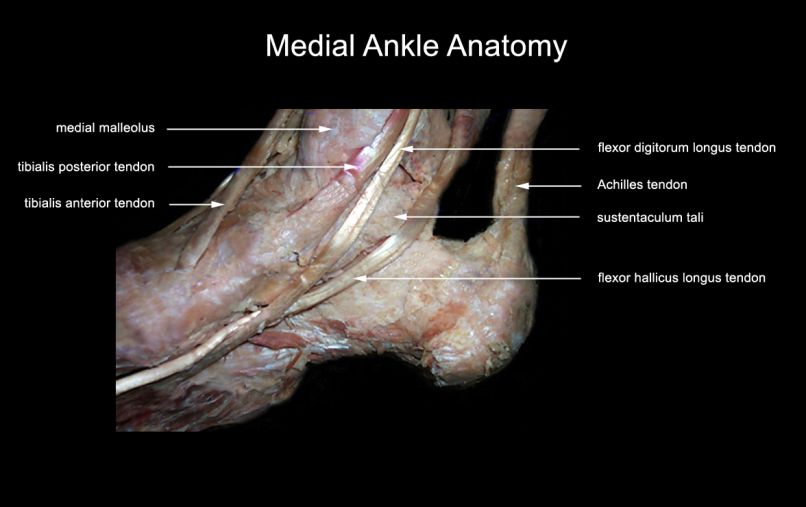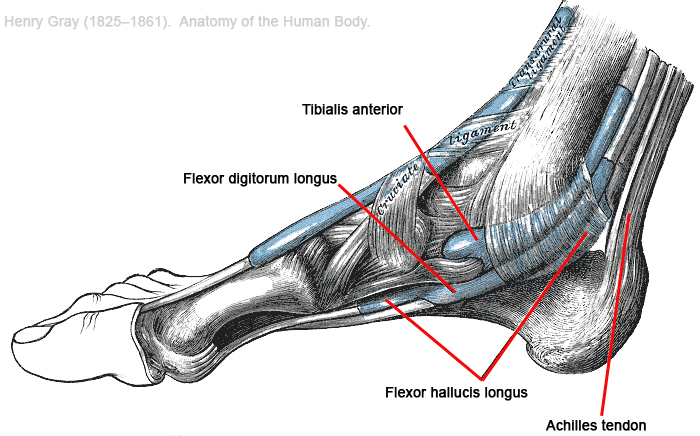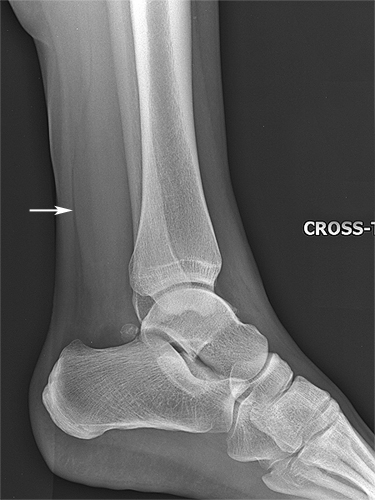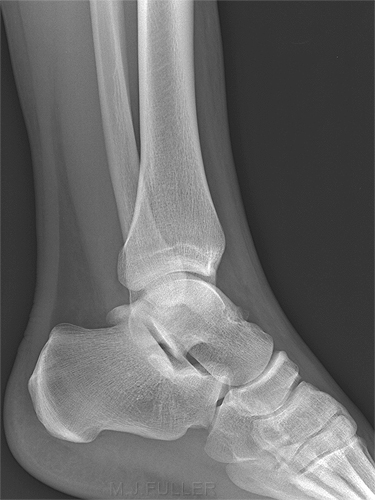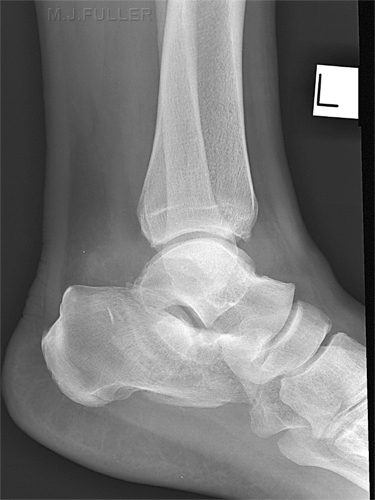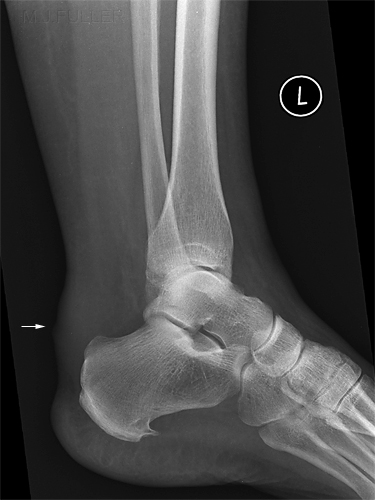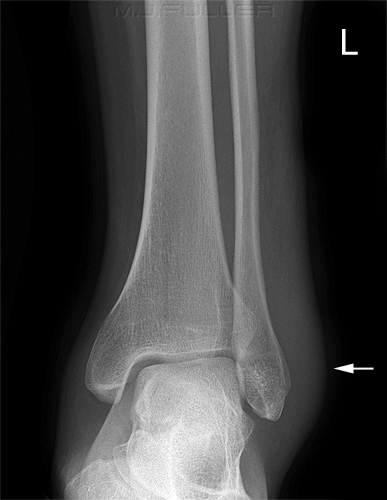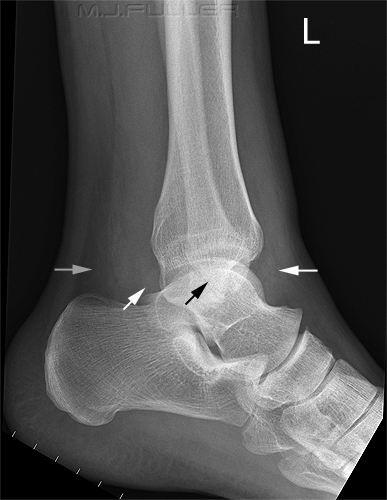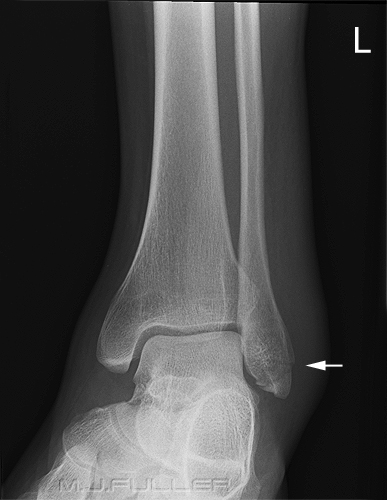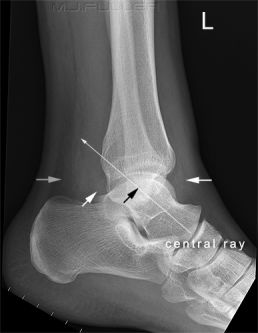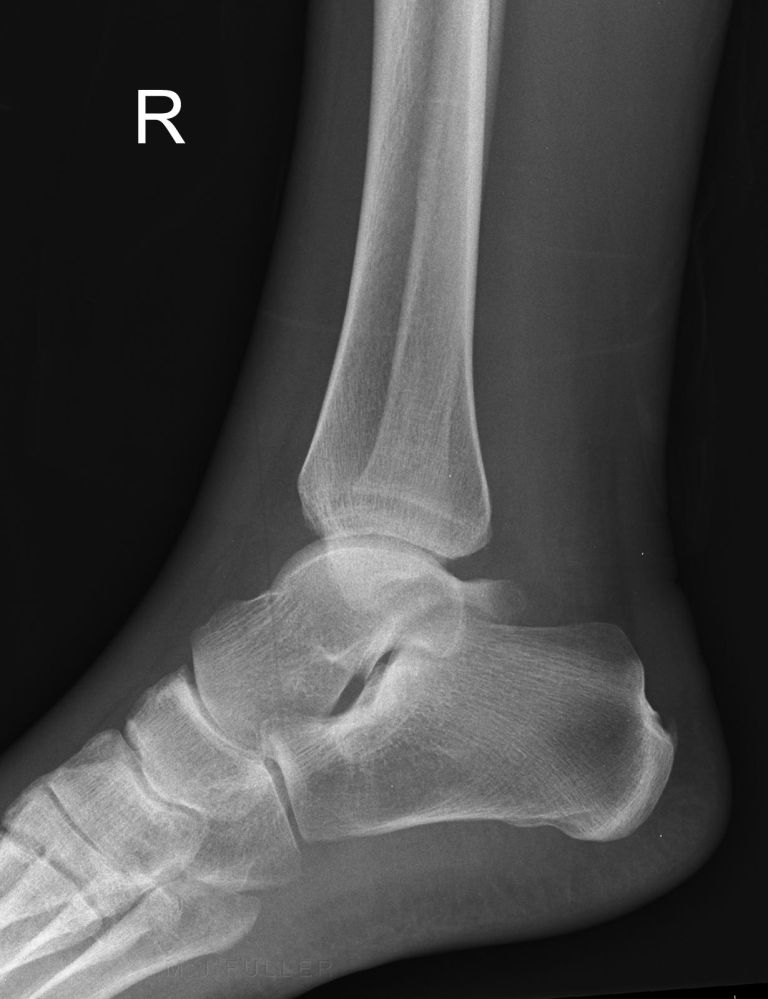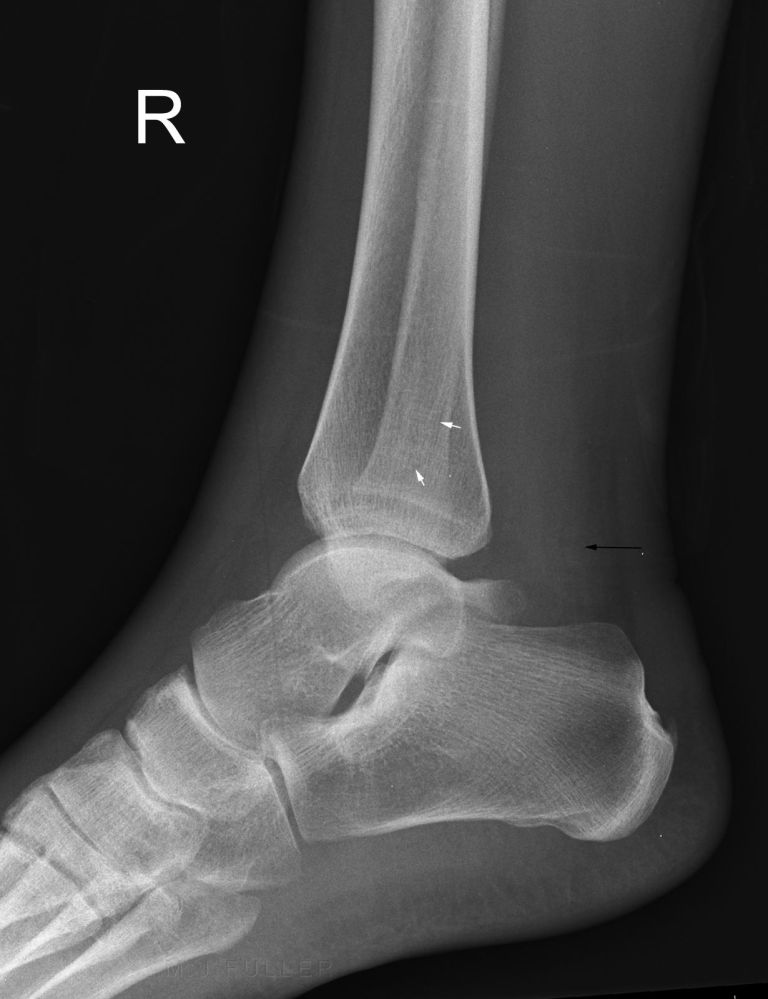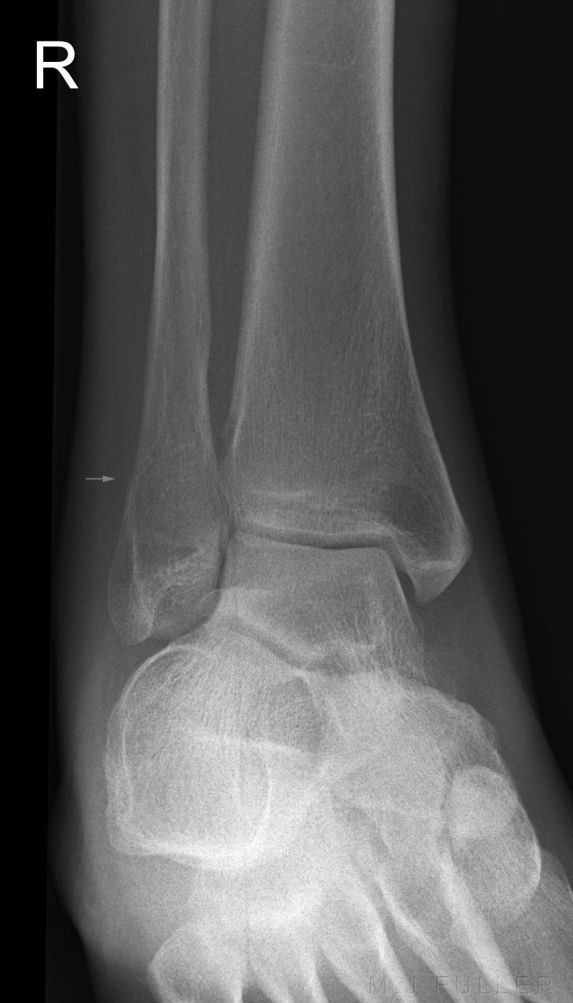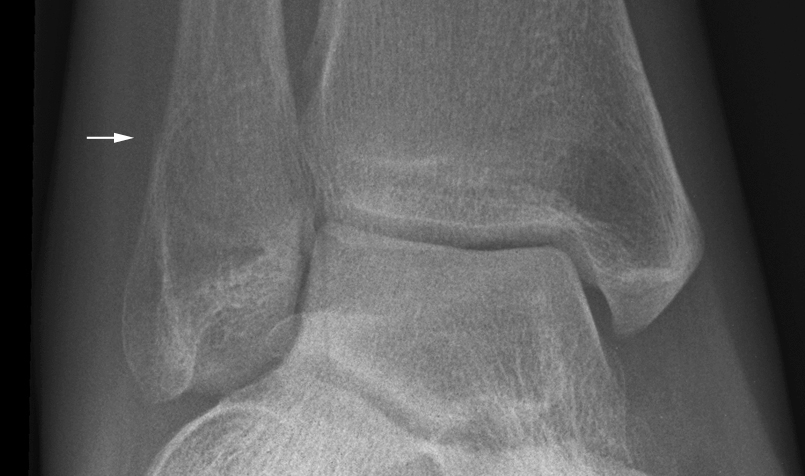Soft Tissue Signs- The Ankle
An equivocal fracture appearance should be considered in the context of other information such as
- Patient history
- Clinical presentation
- Radiographic soft tissue signs
This page will examine the radiographic soft tissue signs of bony injury of the ankle- what they are, their plain film appearances, their limitations, and their utility.
Ankle Effusion- The Teardrop Sign
An ankle effusion suggests a significant injury to the ankle joint. The anterior and posterior extra-capsular region of a normal ankle joint should appear as a fat-like density. In the presence of an ankle effusion, the capsule can become distended and may appear to have a more fluid-like density
normal ankle demonstrating a fat -like density (arrowed) abnormal ankle demonstrating a fluid-like density (arrowed)
<a class="external" href="http://www.ajronline.org/cgi/reprint/134/5/985.pdf" rel="nofollow" target="_blank">Richard Towbin1, J. Scott Dunbar1, Jeffrey Towbin2, Robert Clark3. Teardrop Sign: Plain Film Recognition of Ankle Effusion. AJR:134, May 1980</a>This is an ankle arthrogram which simulates an ankle effusion. The distension of the anterior recess (AR) and posterior recess (PR) of the ankle joint are simulated. "(ankle) Fat pads are consistently visualized on the plain radiograph. Anteriorly the pretalar fat pad usually appears crescentic, and is cradled in the neck of the talus. There are two posterior fat pads, a thin juxtaarticular and a larger pre-
Achilles fat pad. The juxtaarticular fat pad is closely apposed to the posterior recess. It appears as a thin, linear structure about 1 -2 mm wide, that courses in a nearly straight line from the posterior aspect of the tibia to the posterior superior part of the calcaneus. The larger posterior fat pad is the triangular, pre-Achilles fat pad" (1)
Ankle Effusion- Correlation with occult ankle fracture
Clark et al (1) investigated the correlation between an ankle effusion and occult ankle fracture. They concluded that the presence of an ankle effusion suggested underlying fracture. Furthermore, they quantified the correlation as follows.
References
1. Richard Towbin1, J. Scott Dunbar1, Jeffrey Towbin2, Robert Clark3. Teardrop Sign: Plain Film Recognition of Ankle Effusion. AJR:134, May 1980
2. Timothy W. I.Clark, Dennis L. Janzen, Kendall Ho, Anton Gnunfeld, Douglas G. Conneli’. Detection of Radiographically Occult Ankle Fractures Following Acute Trauma : Positive Predictive Value of an Ankle Effusion AJR 1995;164:1185-1189
Extra-articular soft tissue Swelling
Soft Tissue Swelling over Malleoli
Soft Tissue Swelling over the Lateral Malleolus
Soft tissue swelling over the lateral malleolus is relatively common because inversion injuries of the ankle are relatively common. An extreme amount of soft tissue swelling does not necessarily indicate a fracture is present. On the contrary, it is frequently seen in severe sprain injuries (tendon/ligament injuries). In equivocal cases where you are suspecting a lateral malleolus fracture and there is little or no soft tissue swelling laterally, you would lean towards a diagnosis of no fracture.
This patient has a ruptured Achilles tendon (white arrow). Note the changes in Kager's Fat Pad (black arrow) Normal Kager's fat pad with clearly delineated normal Achilles tendon Complete disruption of the Achilles tendon is most commonly seen in athletes and in men around the age of forty. Achilles tendon rupture can be treated surgically, or by placing the patient in a cast with equinus (marked plantar flexion) for several months. (1)
References
(1) Helms, Clyde A. Fundamentals of Skeletal Radiology.3rd ed. Elsevier Saunders 2005
It is not uncommon for ankle injuries to involve Kager's fat pad. A careful examination of the density, shape and borders of Kager's fat pad can provide indicators of bony injury to the ankle. An abnormal Kager's fat pad does not indicate definite bony injury to the ankle.
<a class="external" href="http://www.ajronline.org/cgi/content/full/182/1/147" rel="nofollow" target="_blank">Justin Q. Ly and Liem T. Bui-Mansfield Anatomy of and Abnormalities Associated with
Kager’s Fat Pad AJR:182, January 2004</a>
<a class="external" href="http://radiology.rsna.org/content/236/3/974/F11.expansion.html" rel="nofollow" target="_blank">adapted from
The Flexor Hallucis Longus: Tenographic Technique and Correlation of Imaging Findings with Surgery in 39 Ankles
http://radiology.rsna.org/content/236/3/974/F11.expansion.html</a>
adapted from
Ithaca CollegeDepartment of Physical TherapyHuman Anatomy Review Sitehttp://www.ithaca.edu/faculty/lahr/LE2000/LE_ankle.html
Further detail of ankle anatomy shown below
Case Study 1
Case Study 2
... back to the Applied Radiography home page
